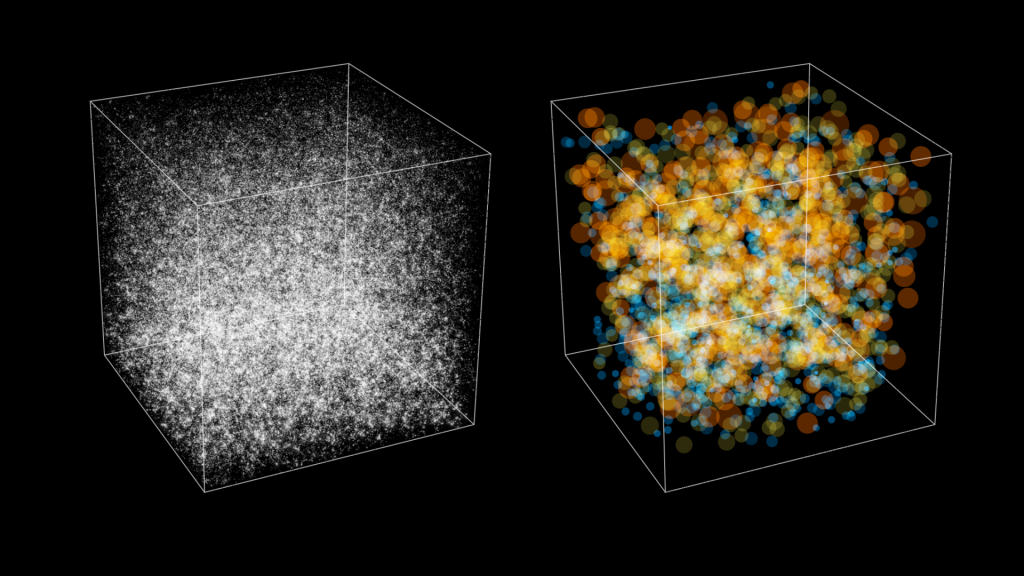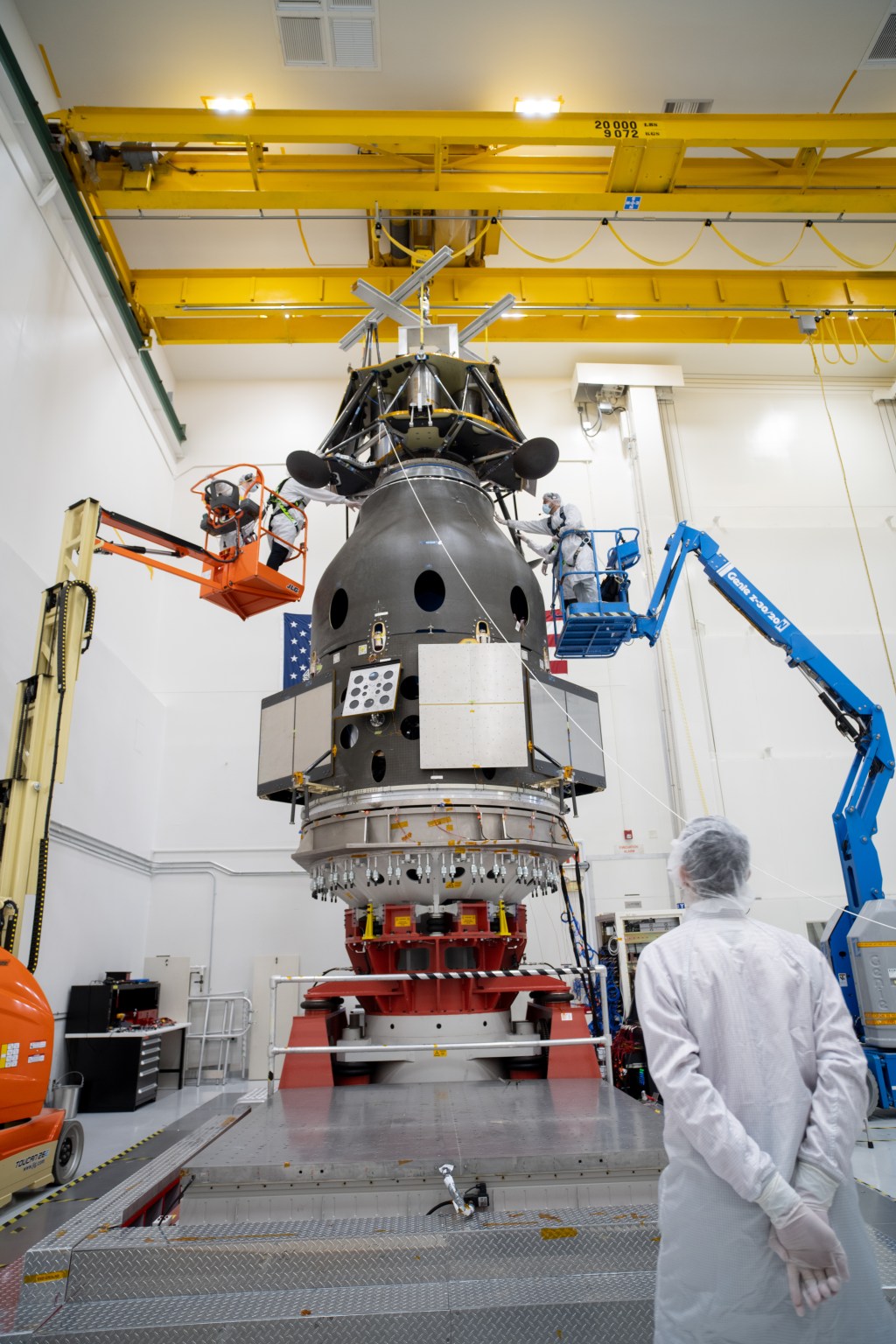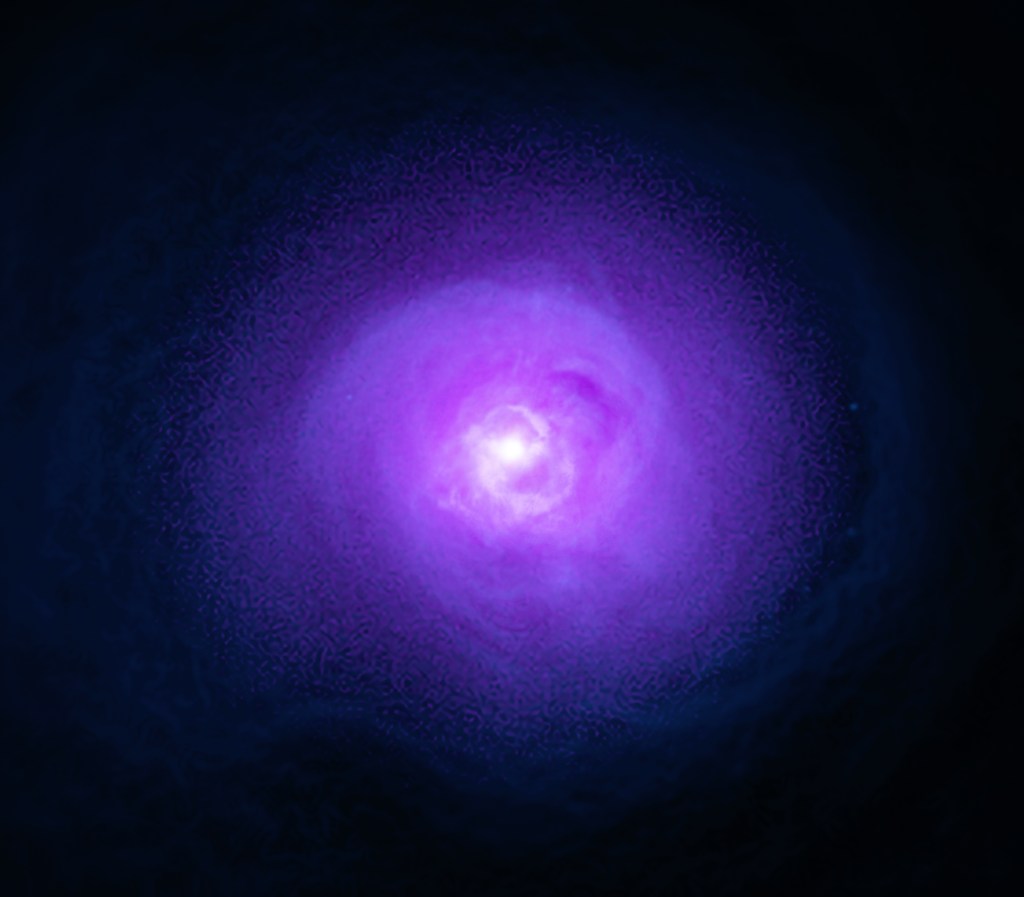1 min read
Looking ‘Underneath’ Quasar HE0450-2958

This image shows the quasar HE0450-2958 after advanced image processing known as MCS-deconvolution. Thanks to this technique, it is possible to remove the brilliant glare from the quasar itself.
The most interesting feature in the image is the nearly total absence of starlight from a host galaxy. The processing also reveals an interesting smaller cloud of gas about 2,500 light-years wide, which the scientists call "the blob," just next to the quasar. Very Large Telescope (VLT) observations show this cloud to be glowing because it is bathed in the intense radiation coming from the quasar. Most likely, it is the gas from this 'blob' that feeds the supermassive black hole, thereby allowing it to shine as a quasar.
About the Object
- R.A. PositionR.A. PositionRight ascension – analogous to longitude – is one component of an object's position.04h 52m 30.0s
- Dec. PositionDec. PositionDeclination – analogous to latitude – is one component of an object's position.−29° 53’ 35"
- ConstellationConstellationOne of 88 recognized regions of the celestial sphere in which the object appears.Caelum
- DistanceDistanceThe physical distance from Earth to the astronomical object. Distances within our solar system are usually measured in Astronomical Units (AU). Distances between stars are usually measured in light-years. Interstellar distances can also be measured in parsecs.About 5 billion light-years in the center
About the Data
- InstrumentInstrumentThe science instrument used to produce the data.HST>ACS/HRC
- Exposure DatesExposure DatesThe date(s) that the telescope made its observations and the total exposure time.October 2004
- Object NameObject NameA name or catalog number that astronomers use to identify an astronomical object.HE0450-2958
- Object DescriptionObject DescriptionThe type of astronomical object.Quasar
- Release DateSeptember 14, 2005
- Science ReleaseBlack Hole in Search of a Home
- Credit
Related Images & Videos

Quasar Without Host Galaxy Compared with Normal Quasar
This figure shows two Hubble images of quasars from a sample of 20 relatively nearby quasars examined by a team of European astronomers with two of the most powerful astronomical facilities available, NASA's Hubble Space Telescope and the European Southern Observatory's (ESO)...
Share
Details
Claire Andreoli
NASA’s Goddard Space Flight Center
Greenbelt, Maryland
claire.andreoli@nasa.gov




























